This is what happens when false and misleading information is widely distributed amongst the bird-loving community. Or any community for that matter.
Recently a Facebook post whose author has a broad following among bird enthusiasts falsely claimed that feeding mealworms to birds can be deadly for them. This of course caused considerable concern and even consternation amongst those who feed birds in their back yards, wild bird rehabbers and businesses that sell bird food. Folks feed birds because they love them so you can imagine their reaction to any claim that they might be killing them.
Much (though not all) of the misunderstanding resulted from the author’s apparent ignorance of the fact that many songbirds regurgitate pellets as a means of discarding undigestible material in their diets such as insect exoskeletons, including those of mealworms. Most bird enthusiasts are well aware that owls cast pellets and many know that other raptors do too. But apparently it isn’t widely known that even many songbirds cast pellets. That’s how I got pulled into the fray in a minor way. Apparently my photos of songbirds casting pellets are among the few available on the internet.
But let’s not get ahead of the story. First I’m going to use some of my photos below to establish the fact that many songbirds and other non-raptors actually do cast pellets.
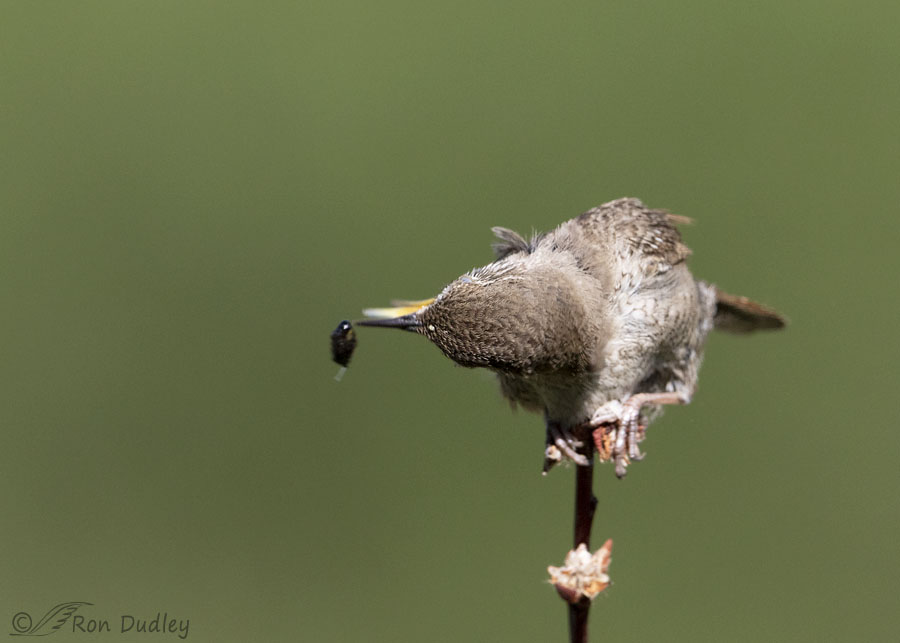
The smaller the bird the faster pellets tend to be thrown and the more difficult the pellets are to see so most folks never even notice it happening. That’s when the magic of photography comes into play. Here I was lucky enough to capture a House Wren casting a pellet.
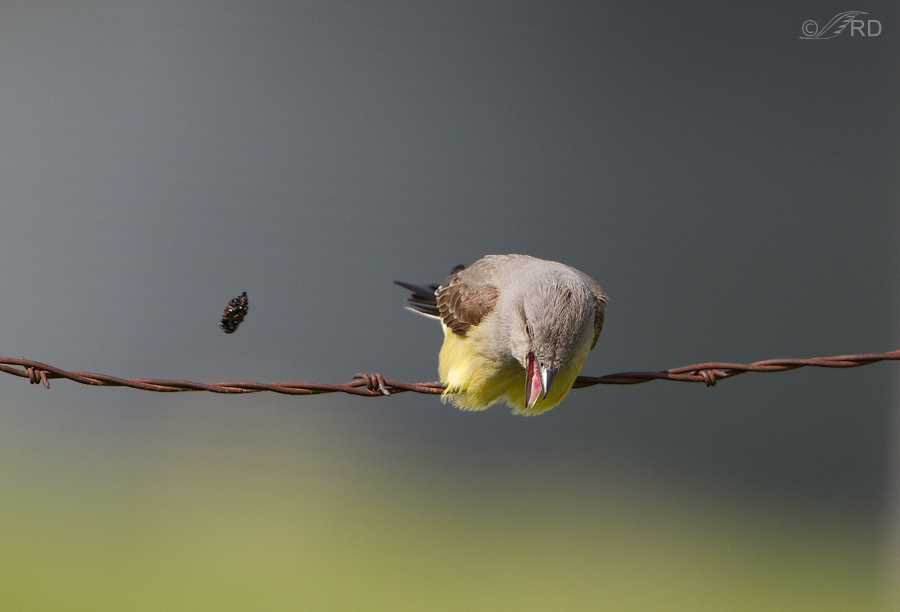
This Western Kingbird shook its head so violently to reject the pellet from its mouth the pellet was thrown far to its right.
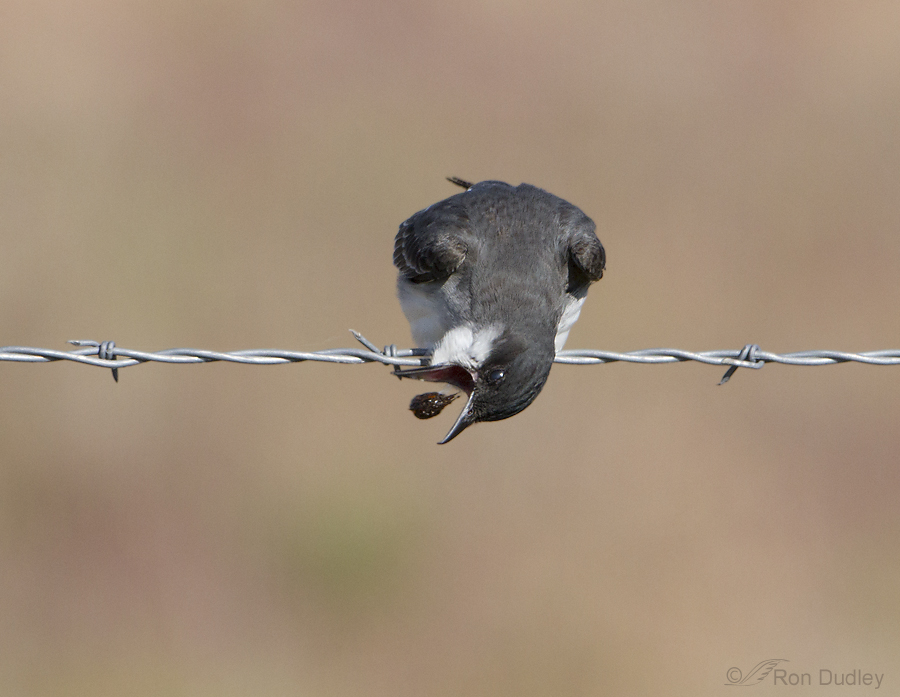
Eastern Kingbirds do it too.
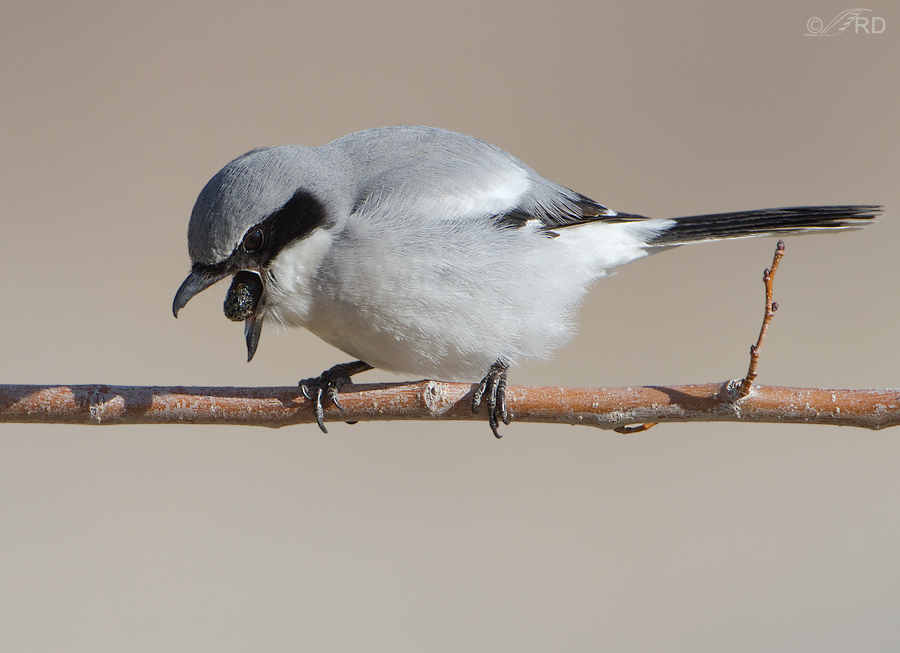
Over the years I’ve been quite successful at photographing Loggerhead Shrikes casting pellets.
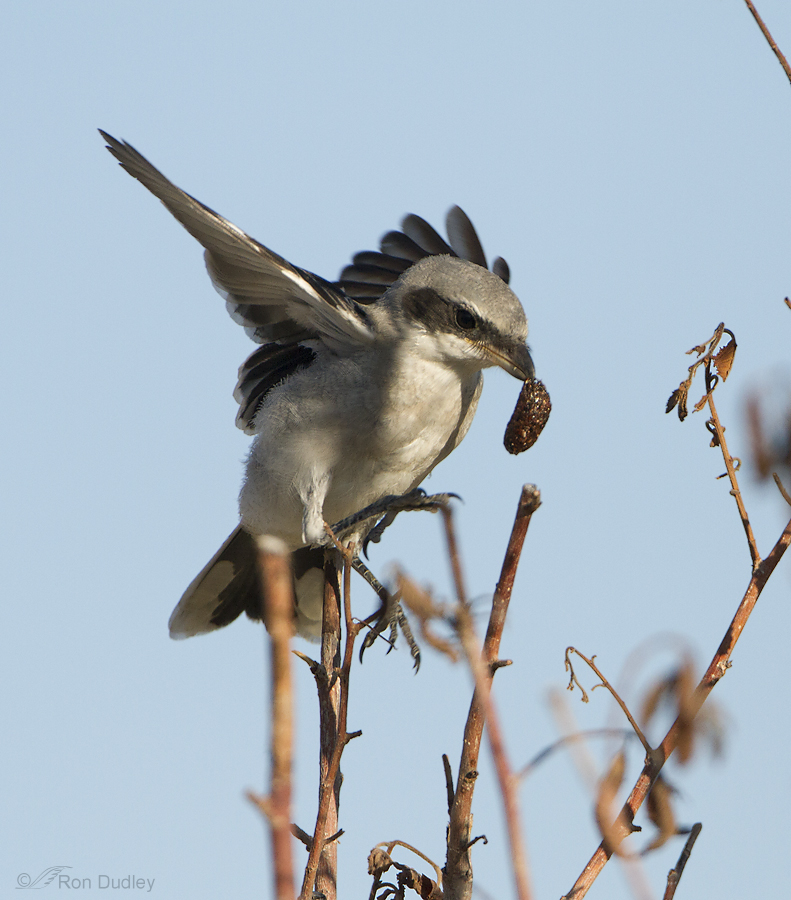
This recently fledged and inexperienced Loggerhead Shrike apparently didn’t quite understand the purpose of pellets. ‘He’ caught the pellet before it fell from his mouth and then…
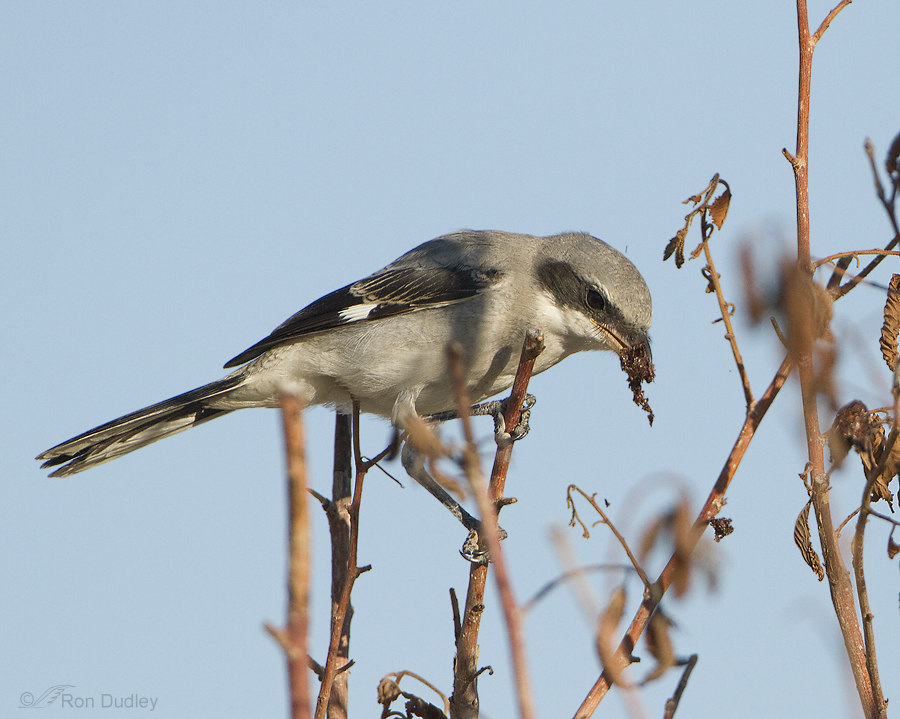
promptly mashed it up with his beak and ate it.
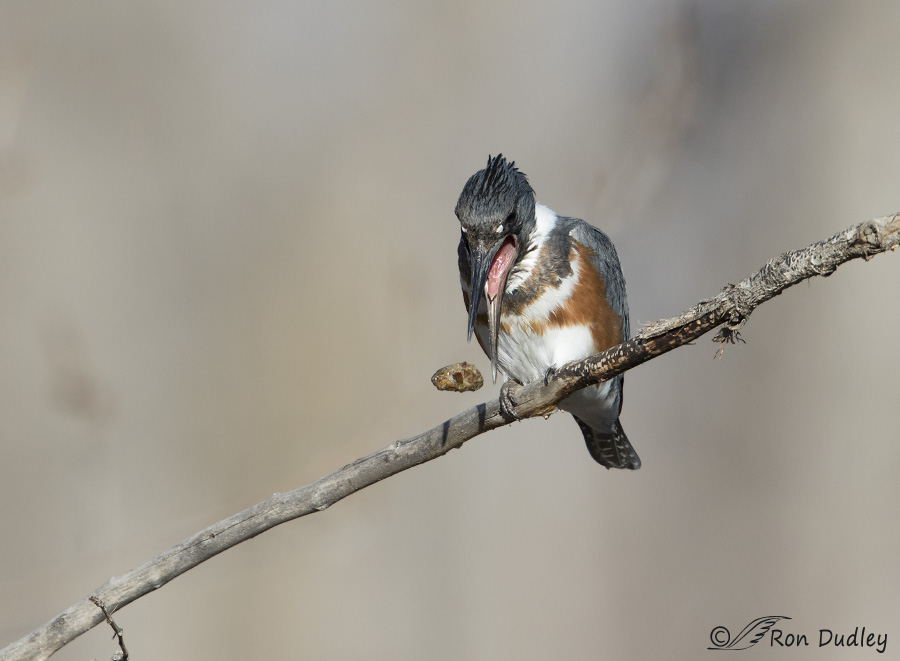
The list of pellet-casting birds is a long one and I’ve photographed many of them exhibiting the behavior including Willets, most raptor species I see regularly and even Belted Kingfishers like this one.
Followers of Feathered Photography know Dan Gleason as a semi-regular and authoritative contributor to our discussions about bird behaviors, bird biology and other avian topics. Dan taught Ornithology at the University of Oregon for many years and since his retirement he has largely and generously devoted his life to educating the public about birds. Dan and his wife Barbara currently own the Wild Birds Unlimited store in Eugene, Oregon.
Dan decided to write and publish a scholarly article disputing the misleading and inaccurate information distributed by the author of the aforementioned Facebook post (now deleted) and others who have spread that misinformation far and wide – even internationally. I became involved in a minor way when Barbara asked me if Dan could use one of my photos of a songbird casting a pellet in the article. Of course I honored their request.
I’ll link to Dan’s article below. It should be of interest to far more than just those who feed mealworms to birds because he discusses topics in a scientific manner related to pellet casting in general, dietary requirements of birds, bird digestive anatomy and physiology and others.
Given the topics covered it’s necessarily a long article but it’s thoughtful, scientifically accurate, well written and interesting. So if you have the interest I suggest you top off your morning cup of coffee, settle in and enjoy the read. You’ll learn a lot, I promise. I certainly did.
Here’s the link to Dan’s article: Mealworms – Separating Truth from Misguided Information.
Ron


Thank you for sharing Dan’s article. And as usual thank you for the great pictures. I had no idea some of these birds cast pellets.


As for you woman that wrote about the mealworms… I’m thinking someone might have been tipping the glass a bit
Thankful we all have you and Dan to provide accurate information.
Enjoy your evening
Who knows about your theory, Diana. Thank you.
I’m with Lyle Anderson… what an amazing collection, Ron! Unbelievable captures of the pellet toss. Thanks!
Thank you, Ellen.
I think you may have to be nominated for that most recondite of Guinness records:
The Person Who Has Taken The Most Photos of Birds In The Act of Casting Pellets.” Bonus points for a certain yuck factor.
Only the most discerning students of avian behavior (e.g., Feathered Photography followers) would appreciate the singular nature of the prize.
Humor aside, you have an astounding library of this behavior, as Barbara Gleason attests to.
I am truly shocked that misinformation about this would find itself on Facebook, that bastion of (alternative) facts.
Absolutely wonderful article by Dan Gleason. Learned more in that one article than I did in all the avian courses I took to be a veterinary technician.
I tried putting dried mealworms in my feeders. Not a bird touched them. Wrong audience perhaps. Looks like I should have snacked on them instead of wasting them on those ungrateful birds.
Thanks, Lyle. I’ll take that record, abstruse as it is.
Knowing Dan I’m sure he’ll be incredibly pleased if/when he sees the part of your comment about his article.
I am surprised that rehabilitators fell for such idiocy. Most of them insist on sources for all the vital info. And they know how to judge the source’s information. Thanks for pursuing this and providing the real stuff!
Sallie, I doubt rehabbers “fell for it”. I suspect they were mostly upset because other folks might be thinking the food they often feed to their “patients” might be killing them.
I understand that rehabbers were at the forefront of challenging these unfortunate and incorrect public claims.
Outstanding!
Another terrific public service, educational article and link to a really interesting chunk of information. (Thank goodness teachers never stop teaching!)
I’ve got precious few photos of birds casting pellets, mostly shrikes. But the search continues ……
Thank you for all you do, Ron!
“But the search continues”
That’s my philosophy also, Wally. For me photographing birds casting pellets is a fun challenge because it’s difficult to do and when I’m successful the results are always interesting.
When I succeed I think a dose of dopamine must be released into my bloodstream because it always feels good…
First, WHAT AN IDIOT. Sorry.
Second, the shrike photo ICKED me out. Lol. I guess I can do kills and blood and entrails but not recycling regurgitation.
Apology to that person not necessary, Arwen. That individual should have known better.
And sorry about the ick-out…
Huge thanks to you and to Dan.
Yes I did learn things – which is an excellent way to start the day.
I am still battling nausea so the photographs cut close to home. Definitely better out than in.
Thanks, EC. And good luck with your nausea!
Great photos, and I always love your educational posts! Do you happen to know if ducks cast pellets? I only recently learned that birds other than raptors cast pellets, and haven’t found any info on duck pellets. I know that they will swallow fish whole, so either they can digest fish bones, or it must go somewhere!
Annie, I’m unaware of any ducks that cast pellets but that doesn’t mean there aren’t any. Fish-eating Common Mergansers aren’t known to cast pellets but some grebe species who also eat fish do produce pellets even though their pellets are mostly composed of their own feathers that they eat deliberately.
I’ve never heard of ducks casting pellets but it was an intriguing question so I spent some time searching the literature this morning. I found nothing with respect to pellet casting. Perhaps they don’t cast pellets because the gizzard can respond quickly to changes in diet. If, for example, a duck is eating hard-shelled mollusks, you might expect a pellet of shell material. Instead, the gizzard enlarges and more forcefully grinds the hard material. If the bird switches to a softer diet, the gizzard will soon become more reduced and expands again later if the re-shifts to harder foods. In addition to the strong musculaar walls of the gizzard, ducks also take up sand and small grit which help with the maceration process in the gizzard.
Excellent information, Dan…..
Thank you, Dan. For everything.
Thank you both for the info, Ron and Dan!
Excellent post today Ron. In our internet world it is so easy for people to spread mis-information. Thankfully we also have people like you, Dan & Barbara who are passionate about educating people. It is so appreciated.
Thank you, Kathleen.
I am so glad that I found your blog !! I learn something about birds or photography every day. I knew that owls cast pellets but who would have thought about songbirds ? Thank you Ron…..
I’m glad you did too, Gary. Thank you.
Thank you so much for this helpful information. Your pellet-casting photos are superb, and the information you and Dan provide is clear and comprehensible to this octogenarian who has no formal scientific training but loves birds and photography. Again, thank you for fighting the disinformation that social media foments, and using it in a generous, conscientious manner to enable us to be better stewards of this amazing and threatened planet. Many thanks to Dan too.
“the information you and Dan provide is clear and comprehensible to this octogenarian who has no formal scientific training but loves birds and photography”
Burrdoo, I’m sure Dan will especially appreciate that part of your comment, as I do. As an author (of sorts) myself I know I always find feedback like that rewarding because it lets me know my efforts have been effective.
Very interesting photos by you and article by Dan! Thanks for sharing this!
Here in Texas, we had a major (for Texas) winter event the third week of February. The bird feeding frenzy was like nothing I’ve ever witnessed. We have 10 large tube feeders from WBU and we went through over 70 lbs of bird seed and 3 lbs of freeze dried mealworms in just a few days.
We have an aerator on our pond and it kept the pond from freezing entirely. As a result, we had Northern Shovelers, Ring-necked Ducks and Green-winged Teal that week on our tiny 1/4 acre pond. Plus it gave all the birds access to drinking water. This is our first year with the aerator and I was very pleased with this unexpected additional benefit.
David, I heard a lot about that storm in Texas, including its effect on birds and other wildlife. Interesting to know how it affected you and your birds. Thanks.
Glad you were able to help the birds in your area through the storm and cold weather! Whata mess!
Once again Ron you show us that your value goes so much farther than your outstanding bird photography. Over these past few years I have taken in so much valuable information about birds and wildlife and photography and government policies etc that I can’t thank you enough.
My wife feeds the birds dried mealworms and I think the birds that most love them are our always entertaining Spotted Towhees.
Thanks for posting this very educational information. I will definitely now read Dan’s article.
In closing I am laughing at Ed’s barfing photos comment.
Thanks very much, Everett. And yes, Ed does have a way with words…
The pet chicken trade has been supplying these treats for several years now also. Guessing the providers of these treats aren’t real thrilled with that “information” being “out there” either.
KNOW several birds “recycle” chokecherry pits and seeds and skin from buffalo berries. Had always “assumed” they passed through but now I’m wondering.
Thx Ron and Dan for “continuing education” and trying to put a dent in such nonsense.
You make a good point about misinformation on other topics, Judy. As you know misinformation and even more often deliberate lies are rampant in the political arena.
The less one knows, the more likely one is to fall for false information. Thanks for keeping us informed, Ron.
That’s right. Thanks, Nancy but Dan deserves most of the credit. Barbara too because she served as Dan’s editor.
Hi,
Thank you for this information and photos.
Take Care,
Kaye
Thanks, Kaye.
Thanks so much for posting this excellent article ! It would be GREAT if someone could forward it to the “author” of the Facebook post, but I tend to doubt that he/she would have the humility to read and learn from it. Their “observations” remind me of all of the people I’ve met who insist that domestic cats and dogs only eat grass when they’re sick– I think that the barfing in that
case is probably analogous , in a house-cleaning sense, to pellet-casting in other species, and so I sprout it for my indoor-confined cat, who enjoys her “salad” daily ……
Kris, from what I’ve been able to glean in the background I’m pretty confident that the author of the FB post will see Dan’s article. Learning from it is another matter…
Lucky captures and saving for verification! Nice that you were able to have photos like these on hand. Probably some have snapped pictures of owls and raptors but not of songbirds. I am certainly surprised at the number of birds other than raptors that do this. I definitely will be reading this article. Thanks for this info.
Kathy, for many of us I’d think reading the article is well worth our time. Thanks.
Super series (though slightly disturbing – wink, wink) of birds regurgitating undigestible materials. I have seen a hummingbird cast a pellet. Birds are so interesting! I will be refilling the mealworm dish in my bird feeder and reading Dan’s article over my second cup of coffee.
Yup, hummers do it too, Melanie. As you know they also eat tiny insects because a strict diet of nectar provides them little if any protein.
Yes, I am definitely aware that hummers consume tiny insects thereby producing tinier pellets to cast! Seeing a petite bird cough up a itty bitty pellet is amazing! As a retired rehabber I have seen my fair share of hawks and owls and herons cast huge pellets that would “choke a horse”! The fun part is giving programs to kids and watching their faces when they hear that birds can take the undigestible body parts of their meals, form a tidy pellet and throw it up. Such clever creatures!
Great photos, Ron. You can capture beautiful “barfing” photos like nobody else
I am glad that Dan, Barbara, and you are correcting the misinformation. I hope the original author of the erroneous claims steps up to the plate and publishes some posts explaining that he/she was wrong. I won’t hold my breath
“I won’t hold my breath”
I won’t hold mine either, Ed. From what I’ve heard this person is unlikely to publicly own up to the misinformation. At least the post has been deleted.
In life, there are a lot of “inverse relations”…
for example, the more someone proclaims they are an expert, the less they really know about a subject.
I think there is another inverse relation, possibly in play here,
The more the pontificator preaches, the less they are likely to publicly correct their mistake.
The smartest people I have ever worked with, including some Nobel Laureates, could, and would often, say these magic words… ” I do not know”, and “I was wrong”.